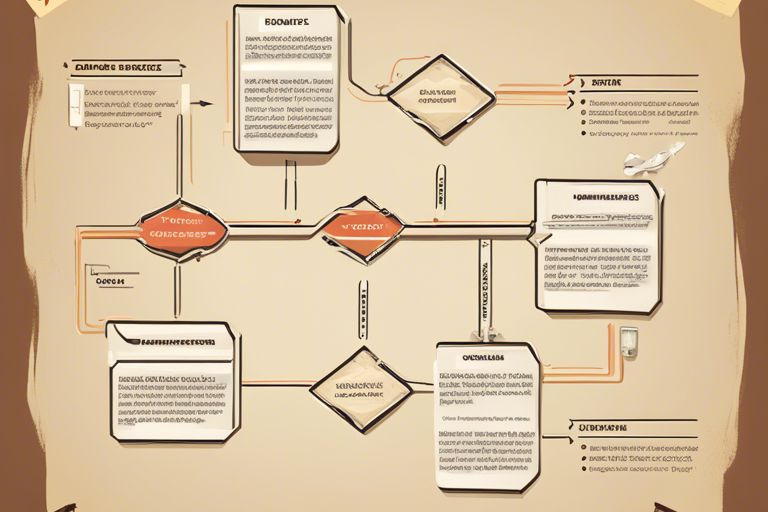Are you often confronted with ambiguous objectives that leave you feeling overwhelmed and unsure of where to begin? Breaking down these ambiguous objectives into clear and achievable action steps is crucial for success. When you identify and clarify your objectives, you are setting yourself up for success in achieving your goals. This blog post will guide you through the process of breaking down ambiguous objectives into clear and achievable action steps, providing you with the tools and strategies to tackle even the most daunting of tasks. By the end of this post, you will have a clear understanding of how to take your ambiguous objectives and turn them into a plan for success.
Understanding the Ambiguous Objective
Your ability to break down ambiguous objectives into clear and achievable action steps is a crucial skill in both your personal and professional life. Ambiguous objectives can be frustrating and overwhelming, but with the right approach, you can turn them into manageable tasks that lead to success. The first step in this process is understanding the ambiguous objective itself.
Defining Ambiguity in Goal Setting
Ambiguity in goal setting refers to objectives that are not clearly defined or are open to interpretation. This can lead to confusion, misunderstandings, and inefficiency in pursuing the objective. Ambiguous objectives often lack specificity and fail to outline clear expectations or outcomes. When you encounter ambiguity in a goal, it becomes challenging to know where to start and how to measure progress.
Identifying the Core Purpose of the Objective
When faced with an ambiguous objective, it’s essential to identify the core purpose behind it. What is the overarching goal or desired outcome that the objective is meant to achieve? Understanding the core purpose allows you to focus your efforts and determine the most relevant action steps to move forward. By identifying the underlying intention behind the objective, you can begin to clarify the necessary steps to reach a successful outcome.

Breaking Down Ambiguity
Assuming you have been faced with ambiguous objectives in your program management role, you may have felt overwhelmed and unsure of where to begin. Managing ambiguity is a common challenge in program management, but there are strategies that can help you navigate through uncertainty and achieve clarity in your goals. If you’re looking for more advice on how to manage ambiguity in program management, you can check out this article on LinkedIn that provides valuable insights.
Techniques for Clarifying Objectives
When faced with ambiguous objectives, the first step is to break them down into smaller, more manageable tasks. Start by identifying the key elements of the objective and ask yourself specific questions to clarify the desired outcome. This may involve gathering more information from stakeholders, conducting research, and seeking input from experts in the field. By breaking down the ambiguity and seeking clarity, you can create a roadmap that will guide you towards achieving your objectives more effectively.
Setting SMART Goals for Precision
To ensure that your objectives are clear and achievable, it’s important to set SMART goals. This means making your goals Specific, Measurable, Attainable, Relevant, and Time-bound. By following these criteria, you can create objectives that are precise and actionable, giving you a clear direction and a way to measure your progress. Setting SMART goals will help you stay focused and motivated, and will increase the likelihood of successfully achieving your desired outcomes.
Designing Actionable Steps
For a successful execution of ambiguous objectives, it is crucial to break them down into clear and achievable action steps. This process requires careful consideration and strategic planning. To effectively design actionable steps, it is important to understand the significance of managing ambiguity in career progression. You can learn more about managing ambiguity as an essential skill for career progression here.
The Importance of Incremental Planning
When faced with ambiguous objectives, it can be overwhelming to begin the process of breaking them down into actionable steps. However, incremental planning is a crucial aspect of this strategy. By breaking the larger objective into smaller, manageable tasks, you can effectively navigate through the ambiguity and make progress. Additionally, incremental planning allows you to assess and adapt to any unforeseen challenges that may arise. It enables you to focus on one step at a time, preventing you from feeling overwhelmed by the enormity of the overall objective. Remember, the key is to break it down into manageable chunks to maintain motivation and momentum.
Mapping Out a Timeline for Each Step
Once you have identified the actionable steps, it is essential to map out a timeline for each one. Establishing a clear timeline provides structure and accountability, ensuring that you stay on track and maintain momentum. Consider the dependencies and potential obstacles for each step, and allocate realistic timeframes to complete them. By setting specific deadlines for each step, you are able to create a sense of urgency and avoid procrastination. This approach also allows you to celebrate your progress and adjust your plan accordingly, providing a clear pathway to achieve the overall objective. Remember, a well-defined timeline is crucial to keep you focused and productive as you work towards achieving your goals.
Implementation and Adaptation
Keep in mind that breaking down ambiguous objectives into clear and achievable action steps is just the first part of the process. The real challenge lies in implementing those action steps and adapting as necessary. One effective method to ensure success is to utilize SMART goals. You can learn more about how SMART goals reduce ambiguity and increase commitment here.
Execution of Action Steps
Once you have broken down your objectives into actionable steps, it is crucial to execute these steps effectively. Set clear deadlines and milestones for each action step, and ensure that everyone involved understands their role and responsibilities. Make sure to prioritize tasks and allocate resources effectively to ensure that you stay on track and meet your objectives within the designated timeframe.
Monitoring Progress and Pivoting When Necessary
As you move forward with the execution of your action steps, it is important to continuously monitor your progress. Keep a close eye on the key performance indicators and metrics that you have established to measure success. If you notice that you are not making the desired progress, do not hesitate to pivot and make necessary adjustments. This could involve reallocating resources, revising timelines, or even modifying the action steps themselves. Flexibility and adaptability are key to turning ambiguous objectives into tangible results.
Using SMART goals, executing action steps effectively, and monitoring progress are all essential elements in breaking down ambiguous objectives into clear and achievable action steps. By being proactive and adaptable, you can ensure that you stay on course and achieve your desired outcomes. Remember, the journey from ambiguity to clarity requires commitment and diligence, but the results are well worth the effort. Stay focused, be willing to pivot when necessary, and celebrate your victories along the way.
Conclusion
Hence, it is crucial to break down ambiguous objectives into clear and achievable action steps in order to successfully accomplish your goals. By defining specific and measurable tasks, you can maintain focus and direction, ensuring that each step brings you closer to your desired outcome. Remember to set realistic timelines and regularly review your progress to make any necessary adjustments. With this approach, you will have a clear roadmap to guide you towards reaching your objectives effectively and efficiently.




